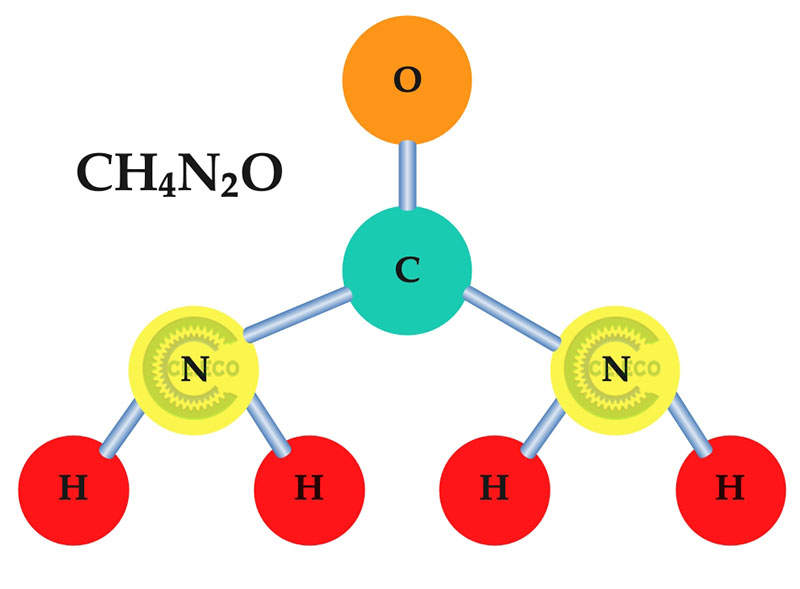Urea was artificially prepared for the first time by F. Wöhler in 1828, evaporating a solution of potassium cyanate with ammonium sulphate: under these conditions the ammonium cyanate converts into urea through molecular transposition.
This reaction, of almost no practical importance, has instead great historical importance because it represented the first example of synthesis of an organic compound identical to a substance produced by animal life.
This synthesis was the first blow to the theory of vital force, according to which it was thought that substances produced by animals or plants could only be formed by the action of that mysterious force called vital force.
Therefore, the synthesis of urea and later the synthesis of numerous other natural organic substances proved this concept completely unfounded.
Urea is a white solid substance crystallized in long prisms: it dissolves easily in water and alcohol but is insoluble in ether.
Urea can combine with acids to form salts; among these we should mention urea nitrate and oxalate, both of which are poorly soluble in water.
Urea is also used in the preparation of many other pharmaceutical products and also has various industrial applications, including as a smokeless powder stabilizer.
Alone or mixed with nitrates or superphosphates it is used as a fertilizer in agriculture. Urea can react with aldehydes to give condensation products.
The products formed from urea and formaldehyde have a special importance: upon heating or with special catalysts these are converted into insoluble artificial resins, hard and transparent like glass. By heating urea in a vacuum, it sublimes unchanged; if it is heated at ordinary pressure it melts at around 132° losing ammonia, which develops into gaseous bubbles; as heating continues, the clear liquid becomes cloudy and then solidifies, because two molecules of urea lose a molecule of ammonia giving rise to a compound called biurea or biuret, which melts at 193°.
However, this will continue to react with the urea not yet decomposed and, losing further ammonia, will transform into cyanuric acid.
Like all amides, urea can be saponified (by the action of high-temperature water, hot diluted acids or alkalis) and transformed into ammonium carbonate.
Urea decomposes due to the action of nitrous acid, releasing nitrogen.
This reaction is used in analytical chemistry to destroy and eliminate nitrous acid contained in a liquid.
Urea is present in human blood and urine.
It is eliminated by the kidneys, through urine.
Urea is a nitrogen fertilizer, widely used due to its high nitrogen content.
There is also urea for zootechnical use, which can be introduced into rations for ruminants, whose ruminal bacterial microflora obtains valuable bacterial proteins.
Urea is used as the main component of an additive used to reduce polluting emissions of nitrogen oxides present in emissions due to combustion.
Other industrial uses include the production of plastics and adhesives, along with melamine and formaldehyde.











